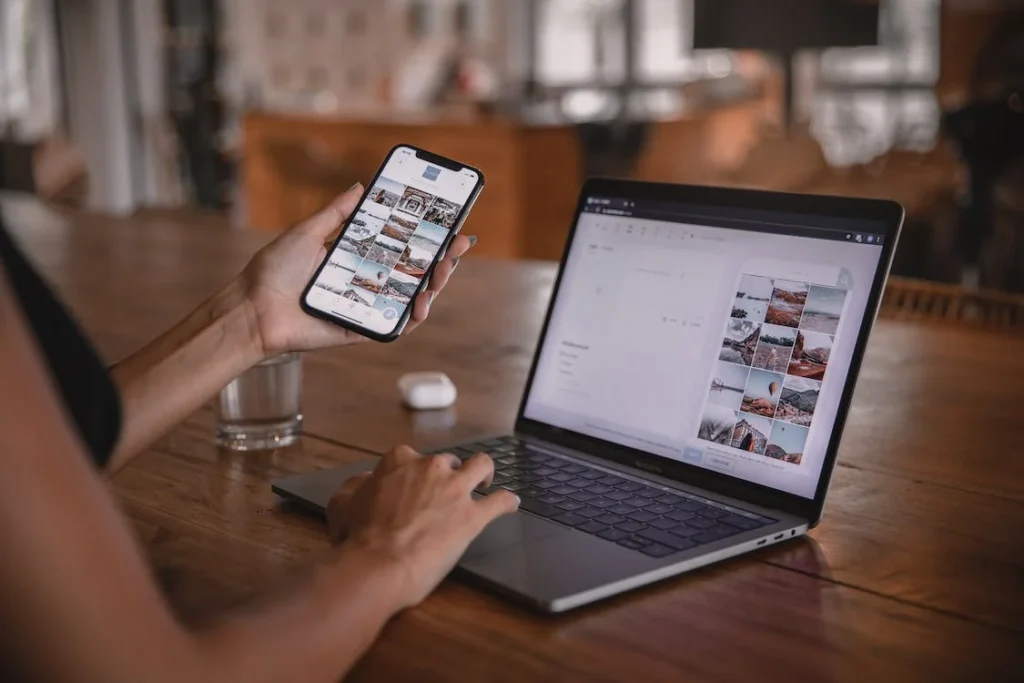In the visually-driven world of the internet, images aren’t just pixels arranged on a screen; they are potent tools that can enhance user engagement, impart information, and significantly bolster the online presence of a brand. Yet, amidst the buzz surrounding textual content optimization, the pivotal role of image SEO often finds itself relegated to the sidelines. This article seeks to redress this imbalance by shedding light on the indispensable art of optimizing visual elements for search — an essential practice that marries aesthetics with analytics, and creativity with technicality.
The Unseen Power of Images
Every image embedded in a website or a blog post is more than a visual entity; it’s a reservoir of untapped SEO potential. When optimized correctly, images can rank in search engine results, pulling in a diverse stream of visitors. This extends a website’s reach, casting a wider net to capture traffic that textual content alone might miss.
The Genesis of Image SEO
The answer lies in a multifaceted approach encompassing various elements like file names, alt text, image size, and the surrounding textual content. Each element, when meticulously optimized, contributes towards making the image not just visually appealing, but also SEO-friendly.
File Names and Alt Text: The Unsung Heroes
Image SEO starts right from the moment an image is saved on a device. The file name acts as the first layer of information for search engine algorithms. Generic, default names like “IMG001.jpg” are missed opportunities. By contrast, descriptive, keyword-rich file names can provide invaluable insights into the image’s content, context, and relevance to a search query.
Alt Text Unraveled
Alt text or alternative text plays a quintessential role, serving as a descriptor that aids search engines in understanding the content and context of an image. This isn’t just a boon for SEO but also enhances accessibility, ensuring that visually impaired users, utilizing screen readers, can comprehend the image content.
Every image should be accompanied by alt text that is succinct yet descriptive. Incorporating relevant keywords is pivotal, but caution is the watchword – stuffing keywords can lead to a subpar user experience and even penalties from search engines.
The Balance of Image Size and Quality
The digital space is increasingly becoming mobile. With users accessing content on devices of varied screen sizes and resolutions, the optimization of image size and quality isn’t just an option – it’s a necessity. Large, high-resolution images can slow down webpage loading speeds, leading to increased bounce rates and a decline in user engagement.
Optimizing images involves compressing them to a size that retains visual quality while minimizing the load time. Tools and software that specialize in image compression can be invaluable assets in this endeavor, striking the perfect balance that caters to both aesthetics and functionality.
Surrounding Text and Image Relevance
The text surrounding an image amplifies the context provided by the file name and alt text. Search engines scrutinize this text to glean additional insights into the image’s relevance and quality. Therefore, ensuring that the surrounding text is rich in keywords and contextually aligned with the image can augment image SEO.
The Rise of Visual Search
As we tread deeper into the visual era, the phenomenon of visual search is gaining traction. Users are increasingly resorting to images to initiate search queries, ushering in a paradigm shift in how search engines retrieve and display results.
Image Sitemaps and SEO
The conversation about Image SEO isn’t complete without touching upon the realm of sitemaps. Image sitemaps play a pivotal role, especially for new websites and those laden with rich media content. These sitemaps aid search engines in discovering images that might not be easily found through the usual crawling process. By listing the images, sitemaps ensure that visual content is visible and accessible, augmenting the website’s visibility on image search results.
Image Formats and SEO Implications
Choosing the right format is paramount in image SEO. JPEG, PNG, and WebP are popular formats, each with its distinctive characteristics and implications for SEO. JPEG is renowned for its compression capabilities, ensuring high-quality images at reduced file sizes. PNG excels in rendering images with transparency, while WebP combines the best of both worlds, offering rich, compressed images that don’t compromise on quality.
Mobile Optimization for Image SEO
The omnipresence of mobile devices has dictated a shift towards mobile-first indexing. Websites are now ranked based on the performance and user experience on mobile devices. Hence, images must be optimized for a seamless mobile experience. Responsive images that adapt to different screen sizes, resolutions, and orientations ensure consistency in user experience across devices.
Integrating Images with Content Strategy
Images aren’t standalone entities but integral components of a broader content strategy. They should be chosen and optimized in tandem with the textual content, contributing to the narrative, enhancing engagement, and bolstering SEO. Every image is an opportunity to convey a message, tell a story, and augment the user’s journey through the website.
Machine Learning and AI in Image SEO
The evolution of SEO is indelibly linked to advancements in technology, and this rings especially true for Image SEO. Machine learning and artificial intelligence are emerging as potent tools in decoding the intricate dance of optimizing images for search.
AI and Image Recognition
AI-powered image recognition is elevating image SEO to unprecedented heights. These technologies enable search engines to discern the content of images with heightened accuracy, paving the way for more precise indexing and ranking. For SEO professionals, this underscores the need for a dual focus – optimizing images not just for textual cues but ensuring their visual content is rich, relevant, and resonant.
Machine Learning Algorithms
Machine learning algorithms are instrumental in tailoring SEO strategies, including image SEO. By analyzing vast datasets, these algorithms can glean insights into user behavior, preferences, and trends. SEO strategies, including image optimization, can be tailored to align with these insights, ensuring that images are not just optimized for search engines but resonate with the audience’s evolving preferences.
Dynamic Image Optimization
The dynamic optimization of images is another frontier being pioneered by AI. AI tools can automatically adjust image size, format, and quality based on the user’s device, browser, and internet speed. This ensures a seamless user experience, reducing load times, and enhancing engagement.
The Future Landscape of Image SEO
As we peer into the future, the integration of VR (Virtual Reality) and AR (Augmented Reality) into web content is inevitable. This evolution will usher in a new chapter in image SEO, where images will no longer be static entities but immersive experiences. Optimizing these advanced visual elements for search will entail novel strategies, marrying technical SEO with an intricate understanding of user engagement in immersive environments.

Related: Check out our free SEO suite

SEO and Augmented Reality (AR) Images
In the nascent, yet rapidly evolving world of Augmented Reality, images are stepping beyond the conventional boundaries and immersing users in an interactive experience. For SEO professionals, AR images present both a challenge and an opportunity. The challenge lies in adapting to a dynamic landscape, where static images morph into interactive elements.
Incorporating AR images into the content matrix necessitates a fundamental rethinking of SEO strategies. Metadata, file names, and alt text remain integral, but there’s a pressing need to optimize the interactive elements of AR for search. User engagement metrics, including the duration and quality of interaction, will potentially play a pivotal role in shaping the SEO landscape for AR images.
VR (Virtual Reality) and SEO
Virtual Reality presents another frontier in image SEO. With images transforming into immersive environments, SEO strategies will have to adapt to optimize these virtual worlds for search. Keywords, metadata, and textual descriptors will have to evolve, encapsulating not just the visual content but the experiential dimension of VR.
Interactive Images and User Engagement
User engagement is central to the SEO narrative. With images becoming interactive, the parameters of engagement are expanding. Click-through rates, bounce rates, and dwell time are being complemented by interaction metrics – how users engage with interactive images, the paths they traverse, and the experiences they seek.
SEO strategies will have to adapt, optimizing interactive images to enhance both visibility and engagement. This will entail a holistic approach, where technical optimization is intertwined with user experience design, ensuring that interactive images are not just visible to search engines but resonate with users.
AI in Enhancing Image Engagement
AI is not just revolutionizing image recognition but is poised to play a pivotal role in enhancing image engagement. AI-powered tools can analyze user interactions with images, glean insights into preferences and behaviors, and tailor the image content and presentation accordingly.
This personalized approach to image presentation can significantly augment user engagement, reducing bounce rates and increasing dwell time. For SEO professionals, this underscores the need to integrate AI tools into their strategy, ensuring that images are not just optimized for search but are tailored to resonate with the individual user.
Final Insights
In the fluid, dynamic landscape of image SEO, adaptability is the watchword. SEO professionals must perpetually evolve, adapting their strategies to the technological innovations and shifting user behaviors that shape the digital realm. Images, in this narrative, are not passive elements but active entities, shaping user engagement and influencing search rankings.
Every image is a confluence of pixels and possibilities, a blend of visual content and latent potential. In this intricate dance of colors, formats, and algorithms lies the untapped potential to propel a website into the coveted echelons of search engine rankings and to echo its narrative across the digital cosmos.
READ NEXT:




















